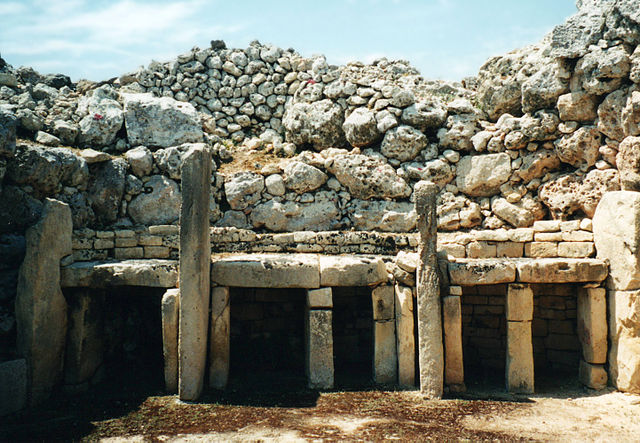





|
Photo Tours:




|
|
The prehistoric temples of Malta are unique in all the world. They are the oldest standing stone structures which remain to us from ancient times. The temples date from 4000 - 2500 BC. They are older than Stonehenge, older than the Pyramids. Their architecture is beautiful and inspiring, their scale impressive yet human. Excellently preserved, they were covered with soil from early times and ignored by the long march of history. They were rediscovered and carefully restored by European and native Maltese archaeologists beginning in the 19th century. Because of their uniqueness and beauty, the major temple complexes are deservedly designated as UNESCO World Heritage Sites. Little is known about the people who built these megalithic temples. The original inhabitants of the Maltese Islands probably crossed over by sea from Sicily, which lies 58 miles to the north, sometime before 5000 BC. The temple builders were farmers who grew cereals and raised domestic livestock. They worshipped a mother goddess whose type is known from early statuettes found scattered around the Mediterranean. Similar statues are also found on Malta, several being of uniquely large size. We know from physical evidence that worship in the Malta temples included animal sacrifice; beyond this, little is known about the rites and rituals that took place there. Although the temples are large in overall extent, their interior chambers do not have enough room to hold more than a few people at one time. Therefore public worship in large groups, as practiced in typical churches and temples today, would not have been possible. The worship of a Mother Goddess is usually associated with female priestesses, although male figures which may represent priests have also been found. Did individual worshippers participate in ceremonies related to important events in their lives - birth, puberty, marriage, sickness, death? Did community leaders consult the temples about planting and sowing, community disputes, food stores, or new settlements? Were the temple leaders also the political rulers of the community? Did they also live in the temples? People are still searching for answers to questions such as these, for the first inhabitants |
of Malta left no writing behind them when they vanished, as mysteriously
as they had first appeared, sometime around 2500 BC.
The Maltese temples are constructed of stone, in a cloverleaf (trefoil) floor plan. Their typical architectural elements include the incomplete dome and the horizontal arch, or post-and-lintel trilithon. The curvatures of the temples perhaps elaborate the circular plan of ordinary dwellings of the time, but are also reminiscent of underground burial chambers. The basic temple plan consists of a variable number of hemispheric chambers, or apses, branching off from a narrow entrance path. The apses are incomplete domes, built of ingeniously corbelled stone, broad at the base and curving in towards the top. However, a full dome could not be constructed using this technique; after the walls had been built up, the apse was roofed in animal hides which were suspended from timber poles. Pole-and-hide construction was also used for the doors. At major sites, two or more temples would be built next to each other, the whole complex being encircled by a common outer wall. The size of the temples varies, but an apse might measure fifteen or so feet in diameter, with outer temple walls rising well over twice the height of a person. For example, the two-temple complex at Ggantija measures about 120 feet side-by-side; the major axis of the larger temple is about 90 feet. As one enters the temples and proceeds through a tall and narrow corridor to the smaller, enclosed apses, initial feelings of expansiveness and awe change to feelings of enclosure and intimacy. No doubt such a progression of feelings played an important part in the emotional experience of the people who worshipped here. Due to the size and complexity of the temples, and the extensive resources which must have been required to build and maintain them, they must have played a very important part in the ongoing life of the community. Without more evidence, though, we can only wonder and admire, across the gap of millennia that separates us from the temple builders. |
|
Copyright ©1998 Michael D. Gunther.
| Home Page |